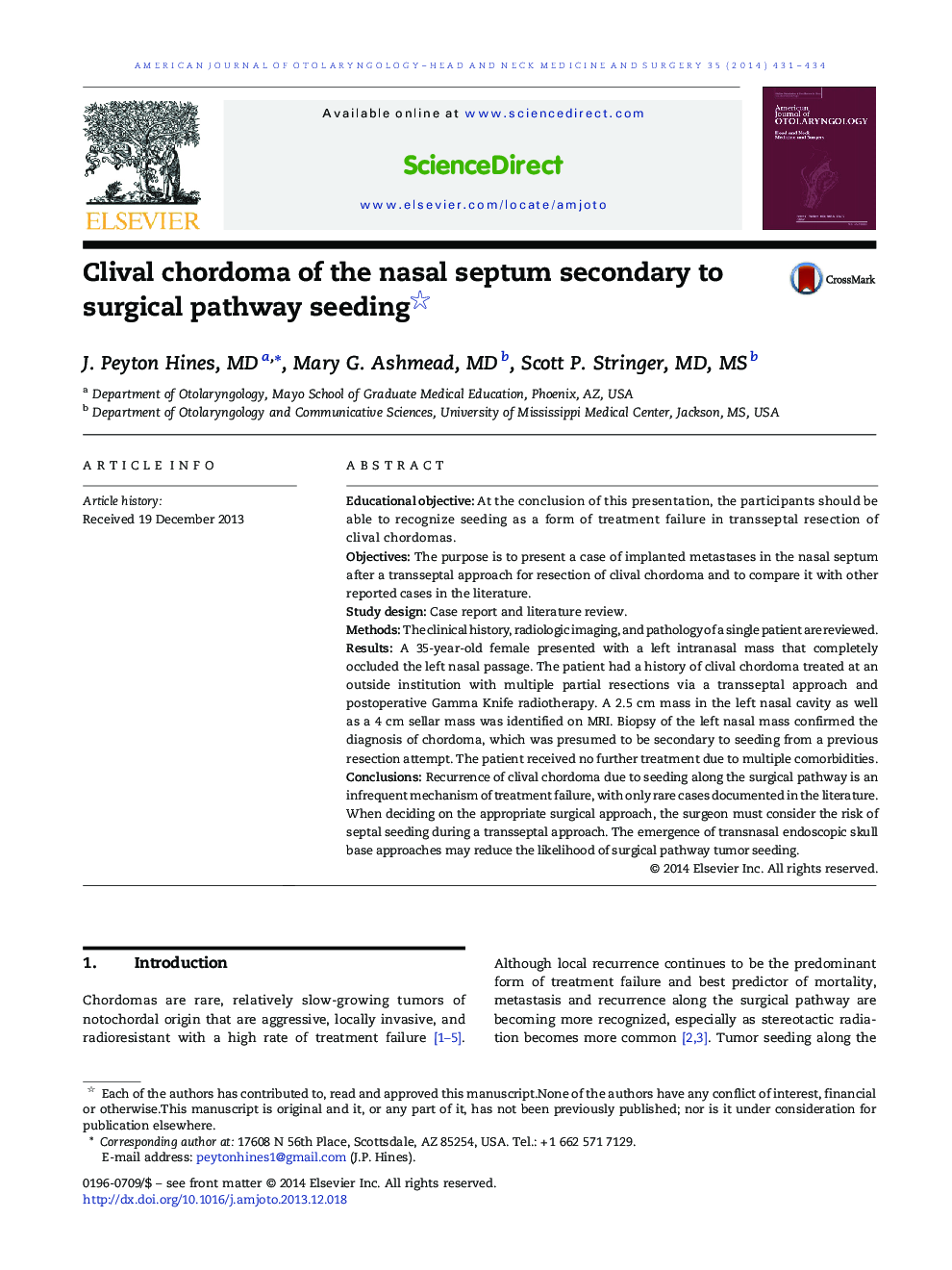| کد مقاله | کد نشریه | سال انتشار | مقاله انگلیسی | نسخه تمام متن |
|---|---|---|---|---|
| 4103259 | 1605243 | 2014 | 4 صفحه PDF | دانلود رایگان |
Educational objectiveAt the conclusion of this presentation, the participants should be able to recognize seeding as a form of treatment failure in transseptal resection of clival chordomas.ObjectivesThe purpose is to present a case of implanted metastases in the nasal septum after a transseptal approach for resection of clival chordoma and to compare it with other reported cases in the literature.Study designCase report and literature review.MethodsThe clinical history, radiologic imaging, and pathology of a single patient are reviewed.ResultsA 35-year-old female presented with a left intranasal mass that completely occluded the left nasal passage. The patient had a history of clival chordoma treated at an outside institution with multiple partial resections via a transseptal approach and postoperative Gamma Knife radiotherapy. A 2.5 cm mass in the left nasal cavity as well as a 4 cm sellar mass was identified on MRI. Biopsy of the left nasal mass confirmed the diagnosis of chordoma, which was presumed to be secondary to seeding from a previous resection attempt. The patient received no further treatment due to multiple comorbidities.ConclusionsRecurrence of clival chordoma due to seeding along the surgical pathway is an infrequent mechanism of treatment failure, with only rare cases documented in the literature. When deciding on the appropriate surgical approach, the surgeon must consider the risk of septal seeding during a transseptal approach. The emergence of transnasal endoscopic skull base approaches may reduce the likelihood of surgical pathway tumor seeding.
Journal: American Journal of Otolaryngology - Volume 35, Issue 3, May–June 2014, Pages 431–434
